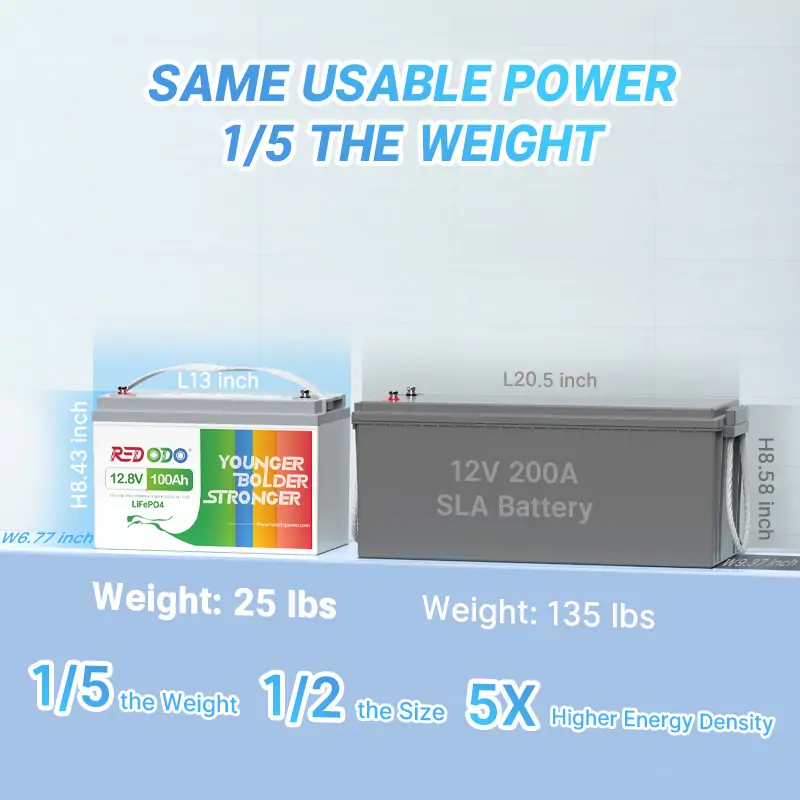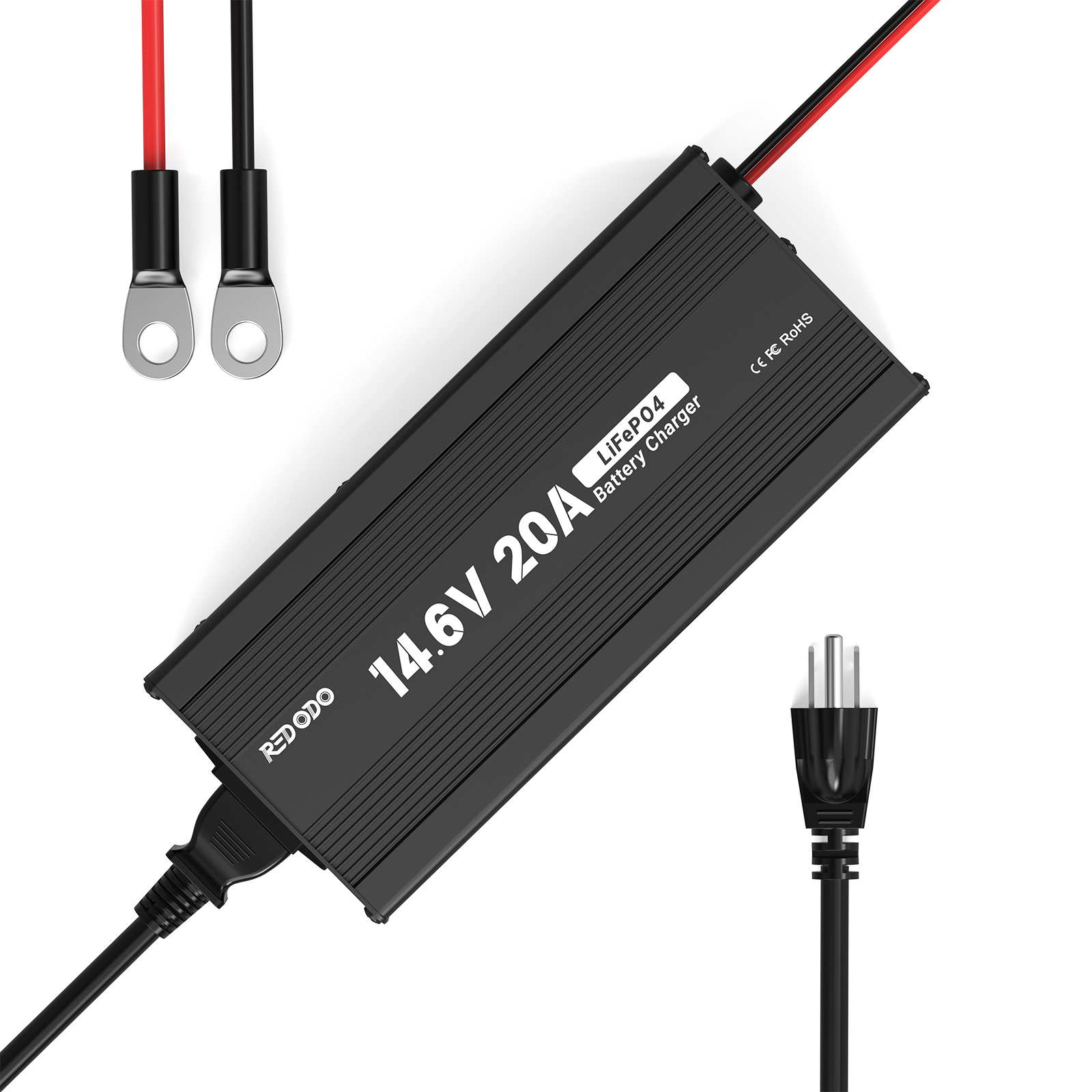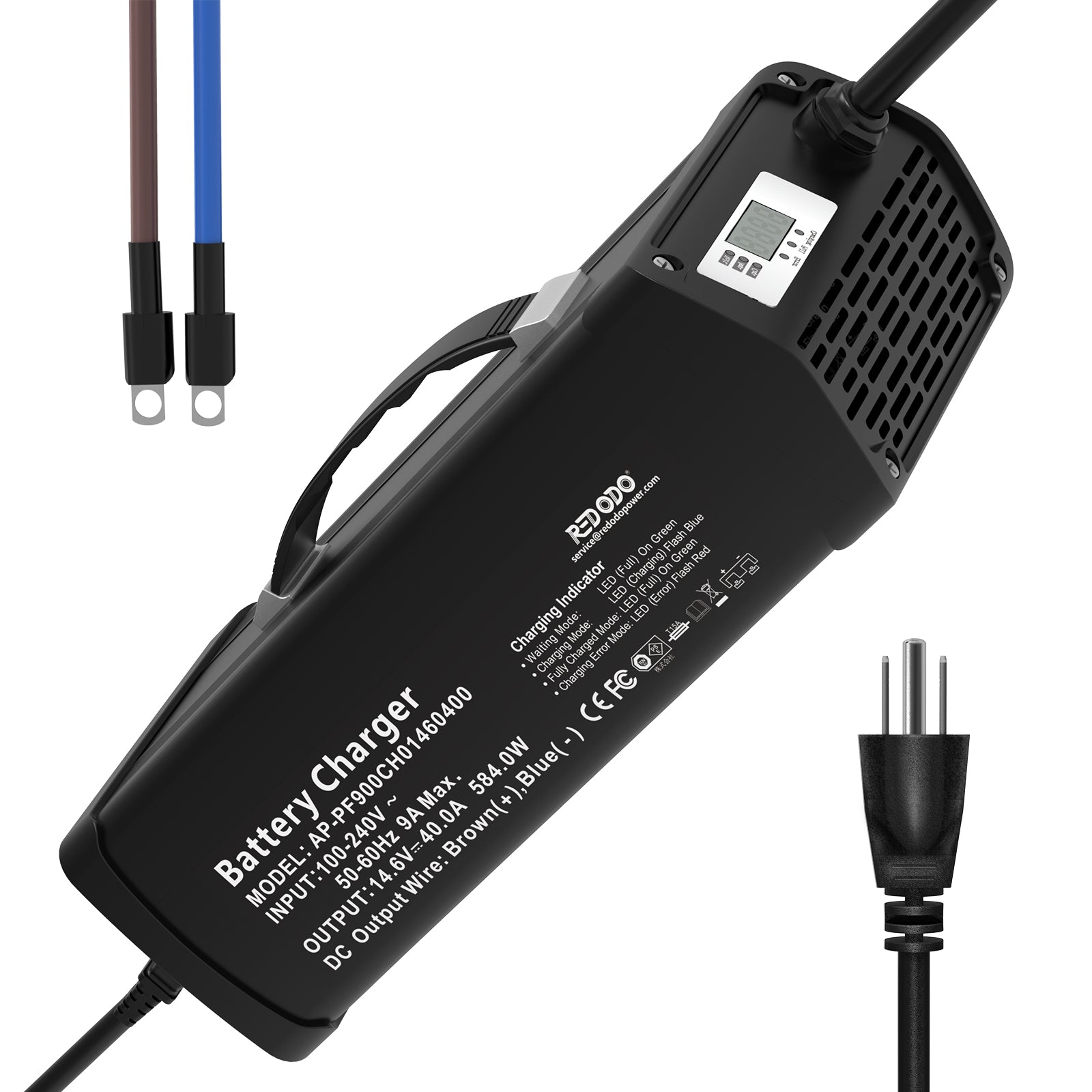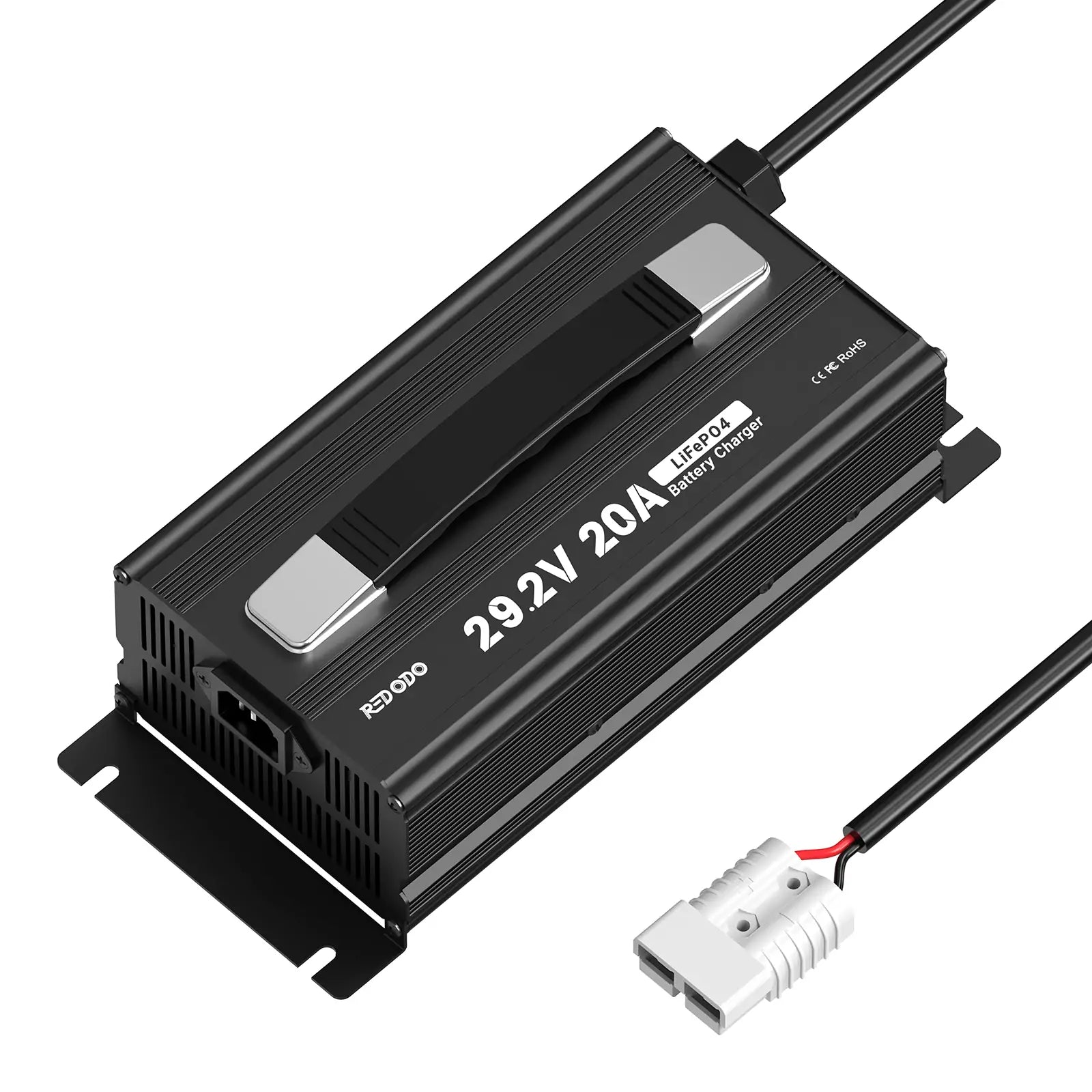Properly charging a deep cycle marine battery is key to maximizing its lifespan and ensuring boat performance. Deep cycle batteries, unlike traditional car batteries, are designed to provide consistent power over long periods and can handle multiple discharge and recharge cycles.
In this article, we will cover the process of charging a deep cycle marine battery, including best practices, charging methods, and tips to help you get the most out of your battery.
Table of Content
- Understanding Deep Cycle Marine Batteries
- Why Proper Charging a Deep Cycle Battery Is Important
- How to Charge a Deep Cycle Marine Battery: Step-by-Step Guide
- Charging A Lead-Acid Deep Cycle Marine Battery
- Charging A Lithium Deep Cycle Marine Battery (LiFePO4)
- How Long Does It Take to Charge a Deep Cycle Marine Battery
- How Long Can a Deep Cycle Marine Battery Last without Charging
- Tips for Maintaining Your Deep Cycle Marine Battery
Understanding Deep Cycle Marine Batteries
A deep cycle marine battery is specifically designed for sustained power delivery, making it ideal for running trolling motors, fish finders, and other marine electronics. Unlike starting batteries, which deliver a quick burst of energy, deep cycle batteries are built to be discharged and recharged repeatedly. There are various types of deep cycle batteries used in marine applications, including:
- Flooded Lead-Acid (FLA): These are the most common type of deep cycle batteries and require regular maintenance such as adding distilled water to maintain proper electrolyte levels.
- Absorbed Glass Mat (AGM): These are sealed and maintenance-free batteries that provide excellent performance in harsh environments.
- Lithium Iron Phosphate (LiFePO4): These are lightweight, long-lasting batteries with superior charge/discharge efficiency and minimal maintenance requirements.
Why Proper Charging a Deep Cycle Battery Is Important
A deep cycle marine battery is a significant investment, and taking care of it through proper charging will ensure it serves you well for years. Correctly charging your battery not only provides reliable power while you're out on the water but also helps prevent damage and increases the overall lifespan of the battery.
Improper charging, particularly with lead-acid batteries, can lead to sulfation, diminishing its performance and lifespan over time. Even lithium batteries, which are more forgiving, can experience reduced performance if not charged properly.
For avid boaters, following manufacturer recommendations for charging is crucial to protect their investment and ensure peak performance.
How to Charge a Deep Cycle Marine Battery: Step-by-Step Guide
Charging your deep cycle marine battery properly is crucial to prevent damage and ensure optimal performance. Here’s a step-by-step guide on how to safely and effectively charge your battery.
Charging A Lead-Acid Deep Cycle Marine Battery
Lead-acid batteries, including flooded, AGM (Absorbed Glass Mat), and Gel types, have been the most common choice for marine applications. Here’s how to charge a lead-acid battery effectively:
1. Select the Right Charger
When charging a lead-acid deep cycle battery, it's essential to use a charger specifically designed for lead-acid batteries to prevent overcharging and ensure optimal battery performance.
2. Prepare the Battery for Charging
- Inspect the battery for any signs of damage, such as cracks or leaks.
- Check the electrolyte levels (for flooded lead-acid batteries). If levels are low, top them off with distilled water.
- Clean the terminals with a mixture of baking soda and water if there is any corrosion.
- Disconnect the battery from the boat’s electrical system to avoid damage to the electronics.
3. Connect the Charger
- Attach the positive clamp of the charger to the positive terminal of the battery.
- Attach the negative clamp to the negative terminal. Ensure the connections are secure and that the charger is properly grounded to prevent electrical hazards.
4. Monitor the Charging Process
For lead-acid batteries, charging can take several hours depending on the capacity and condition of the battery. Keep an eye on the charger’s indicators to ensure proper charging.
5. Finishing the Charge
Once the battery reaches full charge, you can disconnect the charger. Avoid overcharging lead-acid batteries, as it can cause excessive gassing and reduce the battery’s lifespan.
6. Test the Battery
After charging, use a voltmeter or hydrometer (for flooded lead-acid batteries) to check the battery’s charge. A fully charged lead-acid battery should read around 12.6-12.8 volts.
Charging A Lithium Deep Cycle Marine Battery (LiFePO4)
Lithium batteries, especially Lithium Iron Phosphate (LiFePO4), are more efficient and require less maintenance than lead-acid batteries. Here’s how to charge your lithium deep-cycle marine battery, especially if you're using a LiFePO4 model:
1. Select a Proper Lithium Battery Charger
Using the right charger is essential when charging lithium batteries. You’ll need a charger specifically designed for LiFePO4 batteries or one with a dedicated LiFePO4 mode.
A LiFePO4 battery charger for 12V batteries typically charges at 14.4 to 14.6 volts and automatically stops when the battery is full. The Redodo 14.6V 20A LiFePO4 charger is uniquely designed for 12V(12.8V) LiFePO4 batteries, implementing the special three stage Pre-charge-Constant current-Constant voltage charge algorithm.
2. Prepare the Battery for Charging
While lithium batteries are maintenance-free, it’s always good practice to ensure the battery is in good condition before charging:
- Inspect the battery for physical damage or corrosion on the terminals.
- Check if the Battery Management System (BMS) is working. Most lithium batteries have an integrated BMS that prevents overcharging, overheating, and over-discharging.
3. Connect the Charger
When ready, connect the charger’s positive clamp to the positive terminal and the negative clamp to the negative terminal on the battery.
- Ensure secure connections to avoid sparking or damage during charging.
- Start charging by turning the charger on once everything is in place.
4. Monitor the Charging Process
One of the benefits of LiFePO4 batteries is that they charge quickly compared to lead-acid batteries. Lithium chargers generally operate in constant current/constant voltage mode:
- The charger supplies a constant current until the voltage reaches the set limit (around 14.6 volts).
- After reaching the target voltage, the current drops until the battery is fully charged.
Most lithium chargers will automatically stop once the battery is full, so you don’t need to worry about overcharging. Unlike lead-acid batteries, LiFePO4 batteries do not need to be maintained at a float charge, as they hold their charge for extended periods without discharging.
5. Charging in Cold Weather
Charging lithium batteries in cold weather requires caution. LiFePO4 batteries generally shouldn’t be charged if temperatures drop below 32°F (0°C), as it can damage the cells.
- Check for low-temperature protection: Some lithium batteries like Redodo Low-temp lithium batteries come with a built-in low-temperature cut-off feature that prevents charging when temperatures are too low. It will automatically stop charging in cold conditions to protect the cells. If it doesn’t, wait until the battery warms up before charging.
6. Completing the Charge
Once the charger indicates that the battery is fully charged, disconnect the charger. Fully charged lithium batteries should read between 13.3 and 13.6 volts.
7. Test the Battery
Finally, after charging, check the voltage using a battery monitor or Bluetooth monitoring app (if applicable). Many lithium batteries with Bluetooth connectivity that allows you to monitor voltage, capacity, and cycle count directly from your phone, making it easier to track the battery's status and health.
(Redodo Lithium Batteries with Bluetooth)
How Long Does It Take to Charge a Deep Cycle Marine Battery
The time it takes to charge a deep cycle marine battery depends on several factors, including:
- Battery Capacity: Larger batteries (in terms of amp-hours, or Ah) will take longer to charge.
- Charger Output: A higher amp charger will recharge the battery faster. For instance, a 10-amp charger will charge a 100Ah battery in about 10 hours.
- Battery Type: Lithium batteries generally charge faster than lead-acid batteries due to their superior efficiency.
For lead-acid batteries, it typically takes between 8-12 hours to fully charge. Lithium batteries, on the other hand, may only require 4-6 hours.
Related Reading: How Long Can A Lithium-ion Battery Last Without Charging?
How Long Can a Deep Cycle Marine Battery Last without Charging
It depends on the battery type, capacity, and usage. Lead-acid batteries typically self-discharge at a rate of 5-15% per month, meaning they can lose charge even when not in use. In contrast, LiFePO4 lithium batteries have a much lower self-discharge rate of about 2-3% per month, allowing them to hold a charge for much longer.
With minimal usage, a fully charged lithium battery could last several months without needing a recharge. However, it's essential to regularly check your battery’s charge level, especially if you're storing it for an extended period, to ensure it remains in good condition.
Related Reading: How Long Do Marine Batteries Last & Tips To Maintain
Tips for Maintaining Your Deep Cycle Marine Battery
- Charge the Battery After Use
After a day out on the water, it’s crucial to recharge your deep cycle battery as soon as possible. Letting the battery remain in a partially discharged state for an extended period can reduce its overall capacity and lifespan.
- Avoid Overcharging
Overcharging can cause damage to the internal components of the battery, especially in lead-acid batteries. For lithium batteries, most advanced chargers will stop charging once the battery is full, preventing overcharge.
- Store Battery Correctly During Off-Season
If you’re storing your boat during the off-season, it’s essential to properly maintain your battery. Fully charge the battery and disconnect it from your boat’s electrical system. Store it in a cool, dry place and check the charge level periodically, topping it off if necessary. For lithium batteries, a charge level of around 50-70% is ideal for long-term storage.
Related Reading: How to Store LiFePO4 Batteries
Conclusion
Properly charging a deep cycle marine battery is vital for ensuring reliable performance and maximizing its lifespan. By using the right charger and following best practices, you can get the most out of your battery, whether it's lead-acid or lithium. With these tips, your battery will provide reliable power for many boating adventures to come.

Redodo

Redodo
Recent Post

How Long Does a Trolling Motor Battery Last?

Convert RV from Lead-Acid to Lithium Battery: A Complete Guide

How Long Will a 200Ah Battery Run an Air Conditioner?

A Full Review of Redodo 12V 140Ah Group 31 Deep Cycle Battery







![⚡[$220 after Sign-Up] Redodo 12V 100Ah Group 31 Bluetooth Lithium Battery | Real-Time Battery Monitoring | For RV, Marine, Solar](http://www.redodopower.com/cdn/shop/files/Redodo_12V_100ah_group31_bluetooth_lithium_battery.jpg?v=1745565708)
![⚡[$294 after Sign-Up] Redodo 12V 140Ah Group 31 Lithium Battery with Bluetooth | 40% More Capacity | For RV, Marine, Solar Home](http://www.redodopower.com/cdn/shop/files/Redodo_12V_140ah_bluetooth_battery_ee6d5fd1-5c7d-4b9a-90ab-d54d06b29a04.jpg?v=1742967763)
![⚡[$239 after Sign-Up] Redodo 12V 100Ah Group 24 Bluetooth LiFePO4 Battery | Real-Time Battery Monitoring | For RV, Marine, Solar](http://www.redodopower.com/cdn/shop/files/Redodo_12V_100Ah_group_24_bluetooth_lithium_battery.jpg?v=1744253032)
